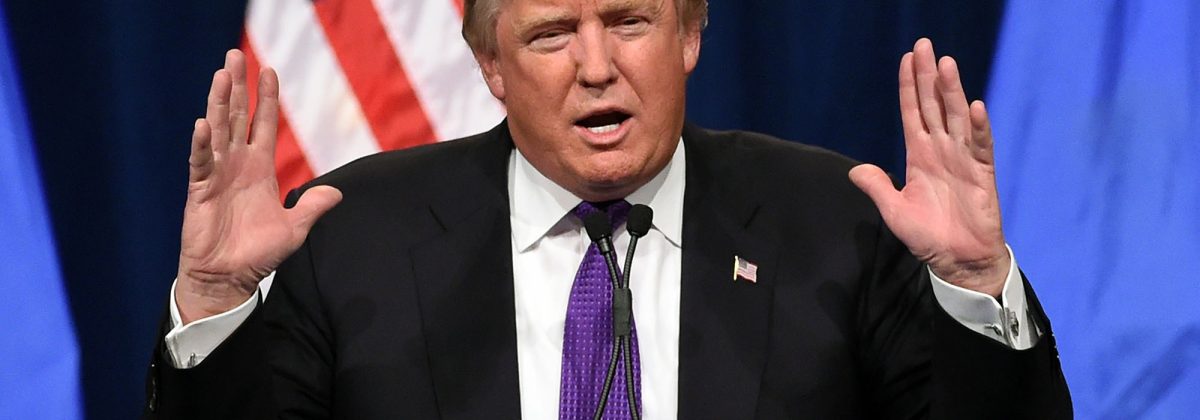Is the US economy still the envy of the world, as President Trump claims? In the recently held 74th session of the United Nations General Assembly, the US President talked about the thriving US economy, stating that the country was on the best possible growth trajectory in many years. This is certainly not the first time he has made such statements. Donald Trump used the State of the Union speech in February 2019 to put similar points across.
The United States is the world’s largest economy and influences the entire global financial landscape. Quite naturally, the US President’s stance and policy reforms exert a huge influence on the global markets and trade. President Trump’s well-known love for tweets, his unprovoked foreign policies and perplexing economic decisions, based on trade protectionism and corporate tax reforms have a lot to do with the ongoing market jitters.
As the nation stands at the cusp of a potential impeachment, along with the impending US Presidential elections, here’s a look at how the last three years have been for the world’s economic powerhouse. This will also serve as an important indicator for the future, should Donald Trump return to office in November 2020.
Steady Economic Growth but Not the Best
Analysts definitely laud the steady GDP growth of the nation, but also point out that the US economy has done better, in far worse conditions. GDP growth under President Trump has constantly ranged been between 2% and 3%. It was 3.1% in Q1 2019, declining to 2.1% by Q2 2019. This is significantly lower than Q2 2014, when GDP growth was 5.5%, under President Obama.
According to Bloomberg, President Trump also failed to meet the 3% growth target in 2018. Updated reports showed that GDP growth stood at only 2.5% in Q4 2018, lower than the expected levels of 2.8%, set in 2017. Although this is much better than the growth levels in 2015, it was significantly lower than the campaign promise of 4% growth.
Booming Job Sector
In his speech at the UN General Assembly, President Trump stated that the current unemployment levels were the lowest in the last 50 years. A closer look at these figures tell us that while in August 2019 the unemployment rate was 3.7%, 50 years ago, in 1969, the unemployment levels were the same, at 3.7%. However, President Trump’s regime has been synonymous with massive job creation. By February 2019, employers had added 4.9 million jobs since the beginning of his term.
Between August 2016 and August 2019, 6 million new jobs were added in the US, Moreover, unemployment levels were the lowest in decades for the African American and Hispanic workers in the US. Even the number of women workers was at a record high early in 2019, standing at 76.6 million.
The numbers sound impressive and encouraging, but it isn’t clear if all of it can be attributed to the Trump administration. Donald Trump took office at a time when the US economy was already amidst a decade-long expansion and continued on its recovery path. Economists say that his trade wars will slowly hurt job creation going forward, as businesses stop hiring due to an uncertain future.
Wage growth has also been rising steadily since 2010. But, putting aside high wage earners, there is significant income inequality in the US. According to a report by the Pew Research Centre, after taking inflation into the picture, US wage growth has been stagnant for a decade.
A Raging Trade War is not Helping Narrow the Growing Trade Deficit
Shrinking the trade deficit has been one of the prime reasons for President Trump’s decision to wage a trade war with China. Along with that, it has also been the reason for him reworking several trade deals. But, according to the US Census Bureau, the trade deficit has grown by $100 billion since President Trump took office.
Two years after the trade war started, the US manufacturing sector is suffering. Soybean exports to China have declined 94%, which has drastically hit US farmers. The US government has had to offer them $9.6 million to compensate for the losses.
US consumers have also had to pay the cost of tariffs, in the form of higher prices for goods and services, but companies have been able to absorb some of these costs, by switching to supply chains outside China. However, the US Chamber of Commerce released a report in March 2019, stating that a prolonged trade war could wipe off $1 trillion from the US economy in the next 10 years.
Stock Market Jitters
A number of President Trump’s policies, including the corporate tax cuts and promises on infrastructure investments, have been responsible for stock market surges, particularly the Dow Jones, early in his tenure. But, again the markets were already on a 10-year bull run, boosted by President Obama’s economic recovery policies.
The 2017 Republican tax law boosted economic productivity, which led to increased hiring in the construction sector. But, it also increased the federal budget deficit, which was 77% higher in early 2019, on a year-on-year basis. If the taxes continue to remain low, in conjunction with increased spending, the annual deficit could rise to $1 trillion per year from 2022 onwards, predicts the Congressional Budget Office.
With regard to the stock markets, the Dow Jones has been suffering from increased volatility in recent months, due to uncertainties regarding the US-China trade crisis. But, that is not the only reason; an overall global slowdown is also a factor.
Future Concerns
US economic performance appears to be a mixed bag. Tensions with China have definitely taken a toll on the US as well as the global economy. Slower growth of the US and China economies is likely to impact demand for commodities and, subsequently, the growth of commodity exporting nations. It has already started to take a toll on manufacturing intensive economies like Germany in the European Union.
President Trump’s recent decision to impose tariffs on EU goods, for violating rules on aerospace subsidies, is likely to hurt US consumers in the long term. The 10% tariffs on Airbus might help Boeing secure more orders, but since 40% of Airbus aircraft are made of US-manufactured components, the US industry will be hit in the long term.
Restricting Chinese listed companies on US stock exchanges might hurt the US capital markets, with about 90% of the ADR (American Depository Receipts) market comprising Chinese companies. China may also consider dumping US Treasury Securities in retaliation, thereby driving up bond yields.
Lastly, the Federal Reserve is under much pressure from the President to lower interest rates almost to negative levels. Nobody knows for sure what this will mean for the global economy, but one thing is clear that uncertainties will rise.
Reference Links
Start Trading in 3 easy steps
1
Complete the Application Form
It takes just minutes for us to verify your identity and set up your account.
2
Download MT4 Platform
Download MT5 and trade via your desktop, mobile or tablet. No minimum deposit required.
3
Start Trading
Trade more than 60 products (Forex, CFDs & Commodities)





